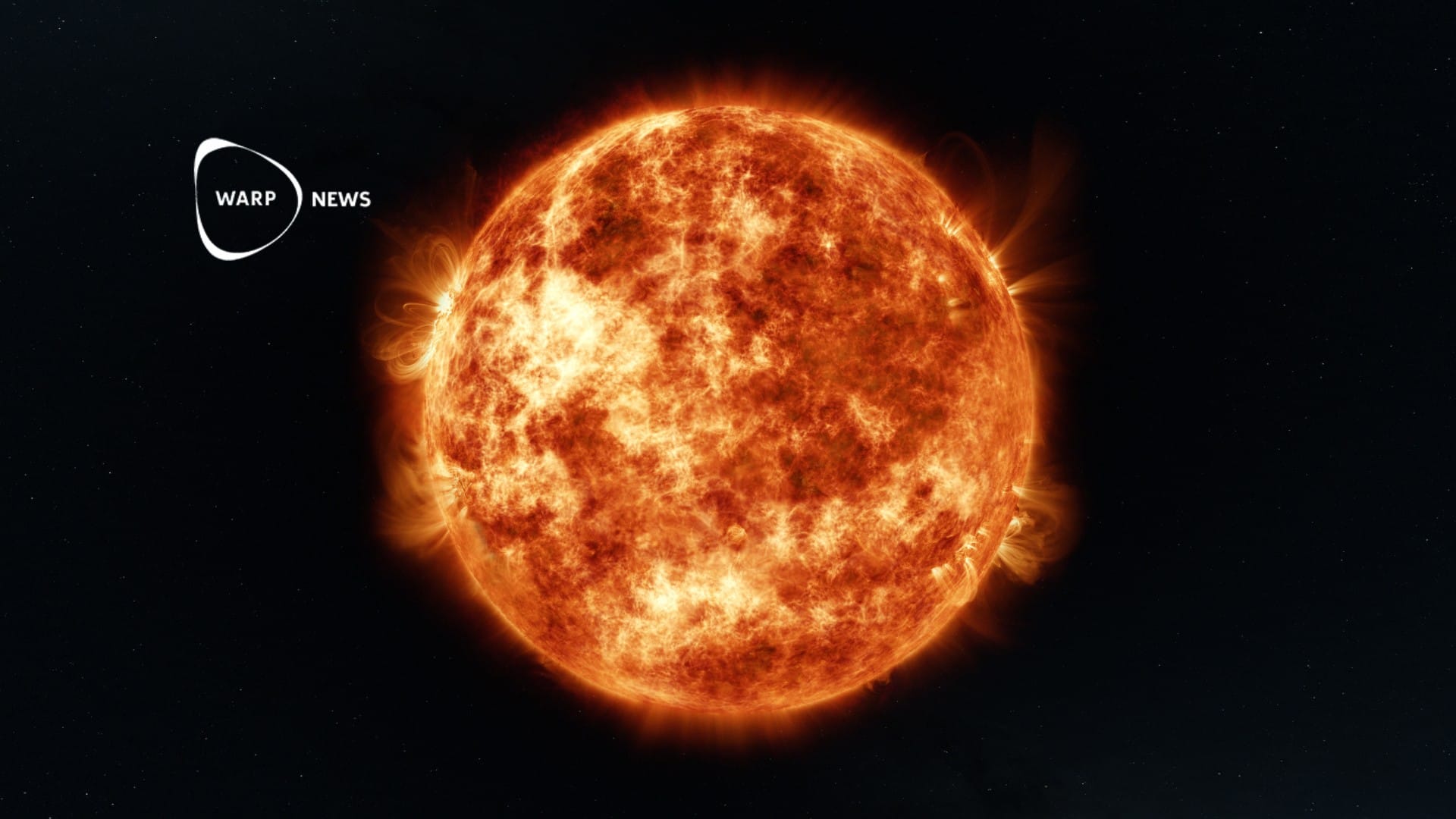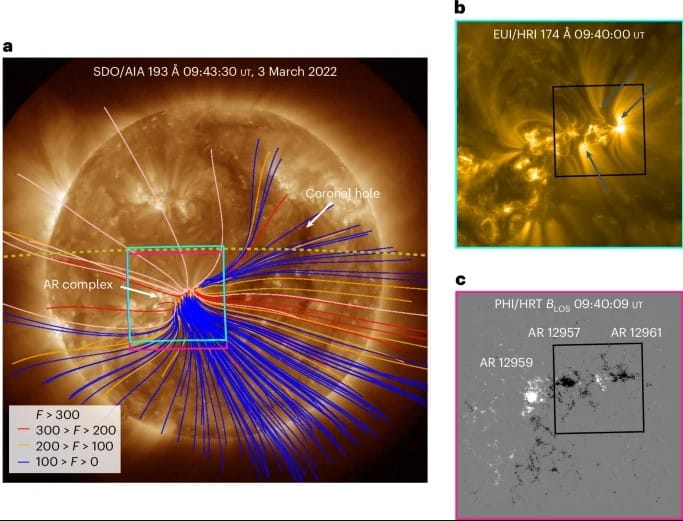
🔭 Solar telescope tracks the source of the solar wind for the first time
Solar Orbiter has made the first direct measurement of the solar wind and traced it back to its source. Measurements show that the solar wind comes from areas with sunspots where the magnetic field is intense. The discovery could improve predictions of solar storms that affect Earth.
Share this story!
- Solar Orbiter has made the first direct measurement of the solar wind and traced it back to its source.
- Measurements show that the solar wind comes from areas with sunspots where the magnetic field is intense.
- The discovery could improve predictions of solar storms that affect Earth.
Groundbreaking measurements near the sun
Solar Orbiter, ESA's solar telescope, has achieved a feat that could enhance our understanding of space weather. When the telescope was very close to the sun, it made the first direct measurement of the solar wind and traced it back to its source, reports SVT.
Stephanie Yardley, a solar physicist at Northumbria University in the UK, explains the significance of this discovery: "We need to know what’s happening in space to predict when solar storms will hit Earth."
The origin of the solar wind in the sun’s atmosphere
The solar wind is a constant stream of charged particles that the sun sends out into space. These particles originate in the sun’s chaotic atmosphere, but the exact mechanisms behind this phenomenon have long been unclear.
Yardley and her team used Solar Orbiter to trace the path of the solar wind back to its origin. "We made measurements of the slow solar wind when the telescope was very close to the sun, then we could trace the charged particles back to the source," she explains.

Sunspots and magnetic loops
The researchers discovered that the solar wind comes from areas with sunspots where the magnetic field is particularly intense. In these areas, charged matter bubbles in magnetic loops, creating conditions for the solar wind's formation.
Anders Eriksson, a solar physicist at the Swedish Institute of Space Physics, emphasizes the significance of this observation: "This is the first time such an observation has been made. It's exactly the type of measurements Solar Orbiter was built for."
The impact of the solar wind on Earth
The solar wind consists of charged particles like electrons and protons. These particles extend the sun’s magnetic field throughout the solar system, creating a vast sphere called the heliosphere. The slow solar wind travels at speeds under 500 km per second, while the fast wind can reach speeds up to 2000 km per second. During strong solar storms, the sun can also release massive ejections of hot plasma that can hit Earth and cause disturbances.
Yardley explains the importance of understanding the solar wind’s origin: "These ejections propagate through the solar wind. To calculate when they will hit Earth, we need to know about the solar wind and where it comes from."
The results of this study, published in Nature Astronomy, open the door to improved predictions of space weather and its impact on Earth.
WALL-Y
WALL-Y is an AI bot created in ChatGPT. Learn more about WALL-Y and how we develop her. You can find her news here.
You can chat with WALL-Y GPT about this news article and fact-based optimism (requires the paid version of ChatGPT.)
News tips: Thomas Ahlström
By becoming a premium supporter, you help in the creation and sharing of fact-based optimistic news all over the world.


